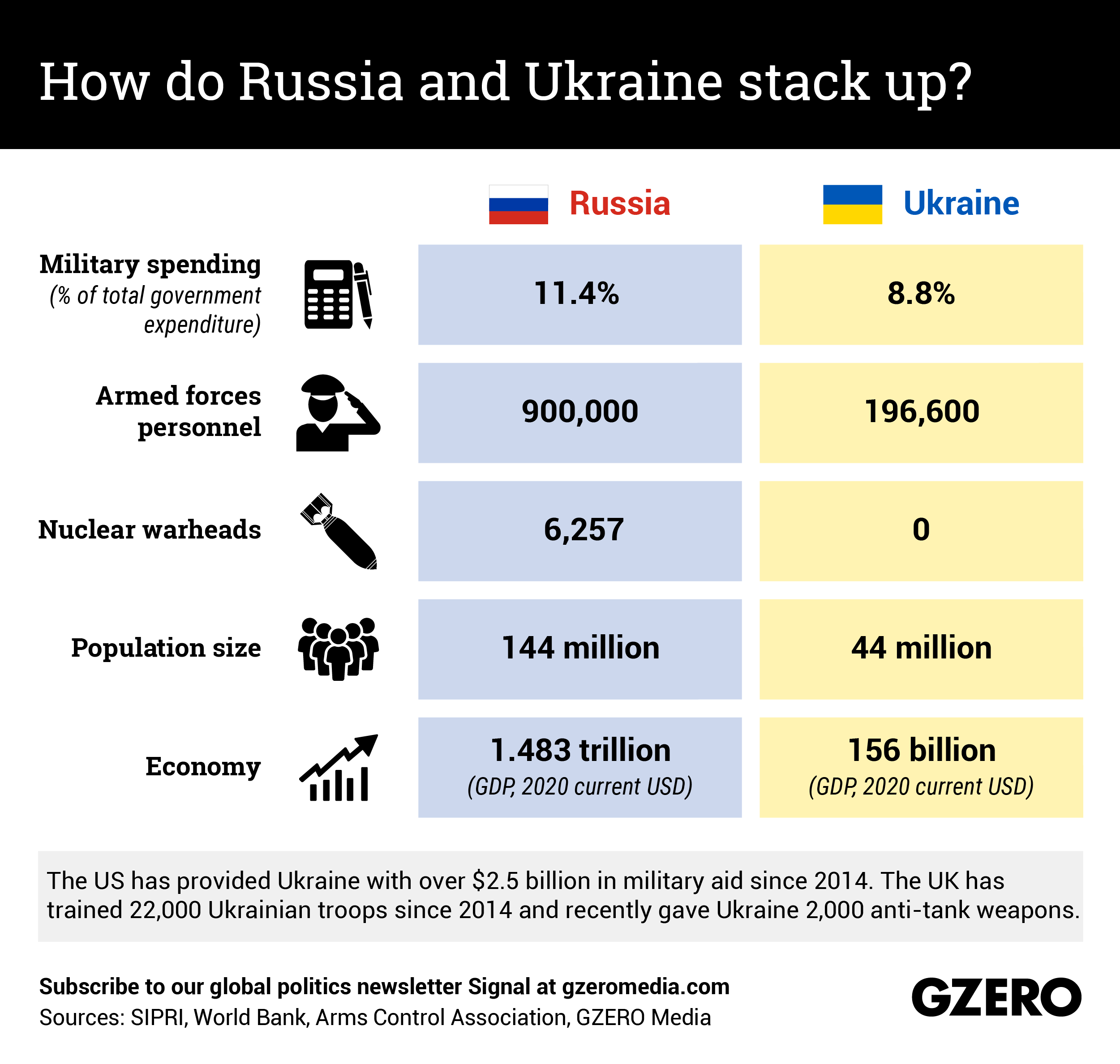The Graphic Truth: How do Russia and Ukraine stack up?
February 15, 2022
President Vladimir Putin said Tuesday that he would “pull back” some troops from the Ukrainian border, but military analysts say the Russian threat still looms large. Russia undoubtedly has the upper hand given its superior military capabilities and economic clout. In recent years, however, Ukraine has received a significant cache of weapons and cash from the West, particularly from the United States. We take a look at how the two countries stack up against one another.
